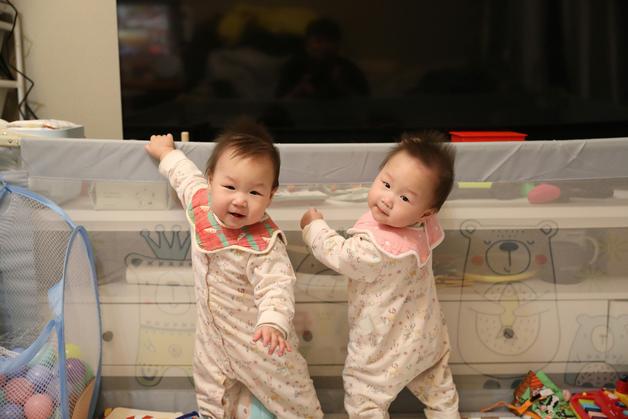Few discoveries rattle expectations and spark as many questions as the realization you are expecting boy-girl twins. Perhaps right now you feel a mosaic of emotions—fascination, anxiety, anticipation—wondering how your family will adapt to a dynamic that feels double in every way: double diapers, double hugs, yet surely, double the unique challenges too? Will routines ever align? Is there a science to the extraordinary kinship these twins share, different from that of singletons or even same-sex twins? Drawing from medical research, developmental psychology, and real-life strategies, let’s demystify what matters most for the health, well-being, and flourishing of boy-girl twins.
What Makes Boy-Girl Twins Unique: Behind the Science
Curious about why your boy-girl twins are so different—yet so bonded? While they share the same nine-month timeline of gestation, they begin their story as separate as two siblings could be: two eggs, fertilized independently by two sperm, resulting in fraternal twins. Surprisingly, boy-girl twins share about 50% of their DNA—just as any siblings would. Molecularly, the difference is clear: the boy has XY chromosomes and the girl has XX. That chromosomal divergence launches pathways for growth, metabolism, and even sensation of taste and temperature that are subtly, sometimes dramatically, distinct.
Yet, there’s a twist to the tale: on the rare occasion, certain phenomena such as sesquizygotic twinning (where one egg is fertilized simultaneously by two sperm) or the even rarer occurrence of chimerism (cells from two embryos blending into one child’s body) remind researchers that in twin biology, textbook rules are often challenged. Occasionally, there are monozygotic twins with differing sexual anatomy due to mosaicism in their chromosomes—a scenario that requires individualized medical follow-up and compassionate support. Yet for the majority, boy-girl twins remain the quintessential example of genetic diversity in twinning.
Medical Insights: Pregnancy, Risks, Genetics
You may wonder—are there extra risks or watchpoints for parents of boy-girl twins? Fraternal twins nearly always develop in two distinct placentas and amniotic sacs. This dichorionic-diamniotic configuration reduces risks like twin-to-twin transfusion syndrome, seen mainly in identical twins sharing a placenta. Clinical monitoring escalates: expect frequent ultrasounds and close tracking of both growth and uterine activity. Prematurity looms larger—around 60% of twin pregnancies result in birth before 37 weeks—but close surveillance allows many of the possible complications to be pre-emptively managed.
Which factors influence your likelihood of having boy-girl twins? The scientific community has identified several: maternal age (especially over 35), family history from the maternal line, ethnicity (higher rates are recorded in certain populations), specific diets, and ovulation-inducing fertility treatments. Each embryo’s journey diverges from day one, shaped by a blend of genetics and environment.
From Ultrasounds to Birth: What to Expect with Boy-Girl Twins
Monthly check-ups, sometimes even every two weeks, will become routine—doppler studies, growth scans, and blood pressure readings punctuate the latter months of pregnancy. If both babies are progressing with head-down positioning and stable heart rates, a vaginal birth could be possible, but flexibility is essential: a cesarean section may be planned if the presentation is less favorable or complications are noticed. Delivery teams prepare with precision, poised to keep both newborns safe and responsive during those decisive first moments.
Postpartum adjustment for boy-girl twins brings its own rhythm—frequent feeding, monitoring of weight curves, and adapting to each baby’s cues. Each child’s transition to the outside world might look different, so pediatric follow-up, early interventions if growth curves falter, and adaptation of routines become everyday acts of attentive parenting.
Daily Life: Feeding, Sleep, and Promoting Autonomy
Feeding Rhythms and Nutrition
Every parent grapples with the feeding puzzle—a puzzle that gets extra pieces with boy-girl twins. Maybe one latches easily, the other struggles with bottle transitions. Does this speak to innate differences in hunger signals, or simply individual temperament? The answer: both. Responding to distinct cues, switching breast sides (if breastfeeding), and introducing solids not by the calendar but by each child’s developmental signs builds confidence and respects individuality. Discard the urge to compare; focus on fostering feeding environments attuned to each child’s pace.
Synchronizing Sleep—Or Embracing the Chaos
Sleep: a word that triggers both yearning and laughter for twin parents. Scientific recommendations support separate sleeping spaces to minimize risk for sudden infant death syndrome (SIDS). Expect nights of staggered awakenings—perhaps your girl needs extra soothing, while your boy drifts off after a feed. Gentle bedtime routines, consistent cues, yet individualized approaches (a soft light for one, a lullaby for the other) create safety and emotional stability even amidst chaos.
Dressing, Naming, and Celebrating Uniqueness
Should you dress boy-girl twins alike, or carve out distinct identities? Research and clinical experience support the latter: individualized clothing, clear naming, and calling each child by their first name rather than defaulting to “the twins” nurtures self-esteem. Ask teachers and family to do the same. This emphasis on individuality helps both siblings build an identity rooted in self, not solely in the twin dynamic.
Room Layout and Personal Space
Establishing sleep and play territories—with separate beds, personalized color accents, and organized storage—creates a physical sense of boundaries that supports emotional autonomy. Shared décor can still be enjoyed, but with careful touches reflecting each child’s preferences, both children feel respected and secure in their environment.
Managing Family Logistics
Multiplying children doesn’t automatically multiply parental capacity. The paradox of raising boy-girl twins is that organization and delegation become essential skills. Visual planners, meal prep, and chore charts provide clear signals and distribute responsibilities. Seeking help—from healthcare professionals, relatives, trusted friends—models resilience and sensible boundary-setting for children too.
Developmental Milestones and Growth: Fairness vs. Individuality
Genetics, Morphology, and Puberty Timing
Genetics map only part of the journey. Boy-girl twins commonly diverge in growth rate or puberty onset; girls, on average, may develop secondary sexual characteristics a year or two earlier. Tracking growth via pediatricians’ charts (percentiles, velocity, weight-to-length ratios) ensures outlier patterns are spotted promptly. Explanations are key: children themselves often notice and question differences, so clear, honest conversations demystify these changes and reduce anxiety.
Cognitive, Social, and Emotional Growth
The science of twin relationships reveals a blend of intimacy and rivalry unique to boy-girl twins. Studies point to subtle in-utero influences: a female twin may show increased interest in action-oriented play, a male may develop language skills differently, yet environmental influences (family, peers, culture) often outweigh biology. Avoid falling into expectation traps—there’s no predetermined “protector” or “dreamer” between the two. Curiosity, competition, affection, and differentiation all jostle for space in the twin relationship, offering rich terrain for growth.
Encourage joint activities (board games, collaborative sports) but also independent pursuits. Allow time apart. This variety supports emotional intelligence, conflict negotiation, and nurtures self-confidence.
Navigating Identity and Social Perceptions
Living with a built-in sibling shapes identity from the very beginning. Boy-girl twins may face external stereotyping in school, from relatives, or among peers (“Which one is the troublemaker?” “Do you always get along?”). Open, age-appropriate discussions about gender, fairness, and respect should be normalized at home. If patterns of rivalry or distress persist, or if self-concept issues loom large, consulting a pediatric psychologist offers a compassionate, evidence-based path forward.
Myths, Cultural Perspectives, and Celebrating Twinhood
Despite popular culture’s fascination with supernatural “twin bonds”, science confirms that boy-girl twins are not more alike than other siblings, and many myths collapse under close scrutiny. Yet, their connection is undeniably unique. Across the world, communities—from the Yoruba of Nigeria to contemporary Western societies—have woven narratives and rituals around twins, sometimes emphasizing difference, sometimes unity. Such stories can enrich family traditions, as long as they foster pride in both unity and individuality.
Key Takeaways
- Boy-girl twins represent a masterpiece of genetic difference and emotional closeness, beginning life with entirely separate genetic codes but sharing a daily tapestry of experience.
- Individual medical follow-up, including growth charts and pubertal milestones, ensures that each child’s unique needs are met.
- Flexibility, respect for individuality, and open communication shape a healthy twin dynamic—one where neither feels overshadowed nor crowded out.
- Family organization is not a luxury but a necessity—delegating, planning, and seeking support builds household harmony and models healthy coping.
- Reliable, accessible pediatric resources and supportive professionals are available—never hesitate to consult specialists if concerns arise.
- Personalized traditions, honest dialogue, and opportunities for both shared and independent experiences nurture the full flourishing of both siblings.
For parents eager to deepen their knowledge and receive tailored support, the Heloa app offers pediatric questionnaires and personalized advice for children—designed to answer your questions at every step of the twin parenting journey.
Questions Parents Ask
Can boy-girl twins be identical?
Boy-girl twins are almost always fraternal, developing from two separate eggs fertilized by two separate sperm cells. This explains why they share about half of their genetic makeup, just like any siblings. Exceptionally rarely, chromosomal variations or mosaicism may lead to twins with differing sexual anatomy that appear identical, but these cases are quite unusual. In most families, boy-girl twins are simply fraternal twins born at the same time.
How do boy-girl twins occur?
Boy-girl twins appear when a woman releases two eggs at the same time and each is fertilized by a different sperm. This is why they are called fraternal twins—genetically, they resemble regular siblings, but their shared prenatal environment and birth date add a special dimension to their relationship. There’s no link to any one parent’s genes, but family history, maternal age, and some factors like fertility treatments can gently increase the chances of having boy-girl twins.
Are there any unique challenges raising boy-girl twins?
Raising boy-girl twins invites unique joys and questions. Parents sometimes notice differences in temperament or preferences and may encounter outside stereotypes about how boys and girls should behave. Respecting each child’s individuality and nurturing their sibling bond, while treating their needs and personalities as distinct, encourage a happy and healthy family life. Reassure yourself—every twin pair writes its own story, and seeking support along the way is always a wise approach.

Further reading:









